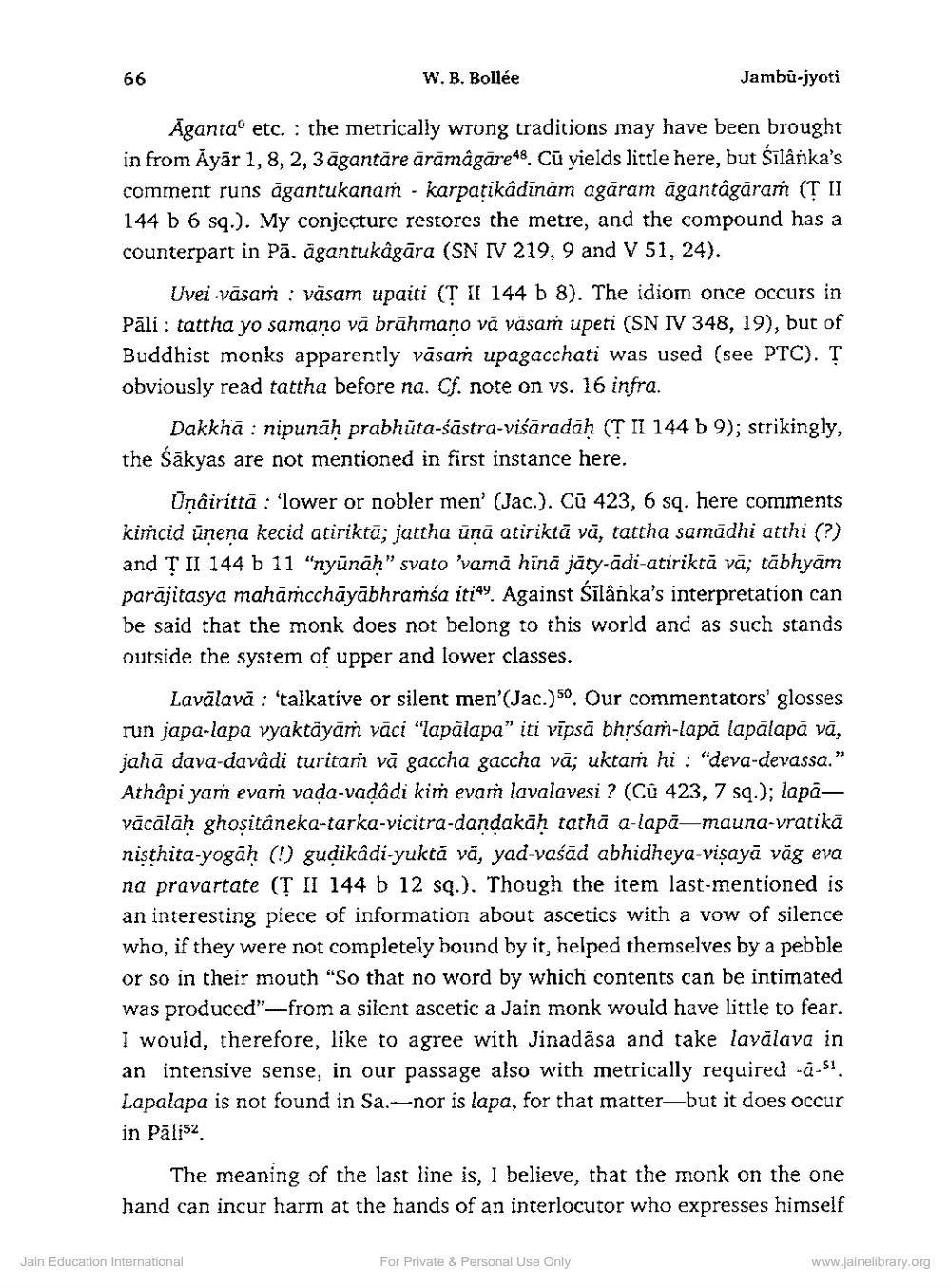________________
66
W. B. Bollée
Jambu-jyoti
Aganta' etc. : the metrically wrong traditions may have been brought in from Ayār 1, 8, 2, 3 āgantare äramägare48. Cū yields little here, but Śīlânka's comment runs āgantukānāṁ - kārpaţikâdīnām agāram agantâgāram (? II 144 b 6 sq.). My conjecture restores the metre, and the compound has a counterpart in Pā. ägantukâgāra (SN IV 219, 9 and V 51, 24).
Uvei -vāsam : vasam upaiti (T II 144 b 8). The idiom once occurs in Pāli : tattha yo samano va brāhmano vă văsam upeti (SN IV 348, 19), but of Buddhist monks apparently vasam upagacchati was used (see PTC). T obviously read tattha before na. Of. note on vs. 16 infra.
Dakkhā : nipunāh prabhūta-śāstra-viśāradāh (T II 144 b 9); strikingly, the Sākyas are not mentioned in first instance here.
Ünâirittā : 'lower or nobler men (Jac.). Cū 423, 6 sq. here comments kimcid unena kecid atiriktā; jattha unā atiriktā vā, tattha samadhi atthi (?) and T II 144 b 11 "nyünah" svato 'vama hīnā jāty-ādi-atiriktā vā; täbhyām parajitasya mahāṁcchāyābhramśa iti49. Against Sîlânka's interpretation can be said that the monk does not belong to this world and as such stands outside the system of upper and lower classes.
Lavālavā : 'talkative or silent men'(Jac.)50. Our commentators' glosses run japa-lapa vyaktāyām vāci "lapālapa” iti vīpsā bhríam-lapā lapālapā vā, jahā dava-davādi turitam vā gaccha gaccha vā; uktam hi : "deva-devassa." Athâpi yam evam vada-vadâdi kim evam lavalavesi ? (Ců 423, 7 sq.); lapavācālāh ghositâneka-tarka-vicitra-dandakah tathā a-lapā—mauna-vratikā nisthita-yogah (!) gudikâdi-yukta vä, yad-vaśād abhidheya-visayā väg eva na pravartate (T II 144 b 12 sq.). Though the item last-mentioned is an interesting piece of information about ascetics with a vow of silence who, if they were not completely bound by it, helped themselves by a pebble or so in their mouth "So that no word by which contents can be intimated was produced from a silent ascetic a Jain monk would have little to fear. I would, therefore, like to agree with Jinadāsa and take lavälava in an intensive sense, in our passage also with metrically required -&-S1. Lapalapa is not found in Sa.-nor is lapa, for that matter—but it does occur in Pālis2
The meaning of the last line is, I believe, that the monk on the one hand can incur harm at the hands of an interlocutor who expresses himself
Jain Education International
For Private & Personal Use Only
www.jainelibrary.org




